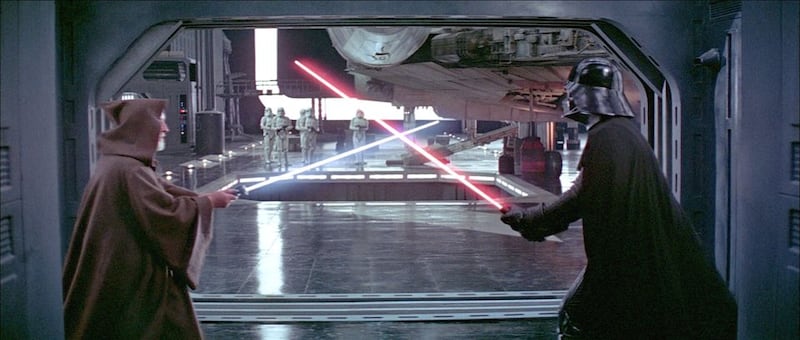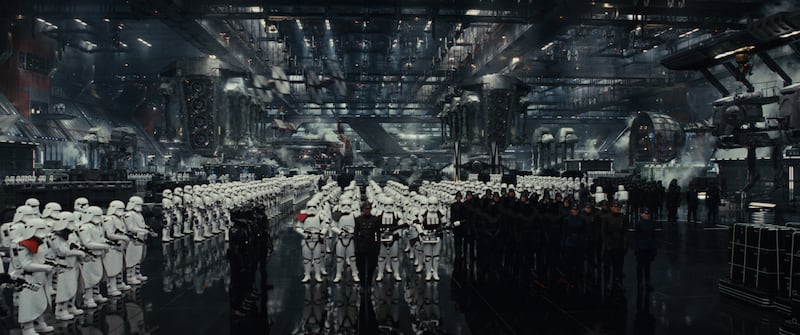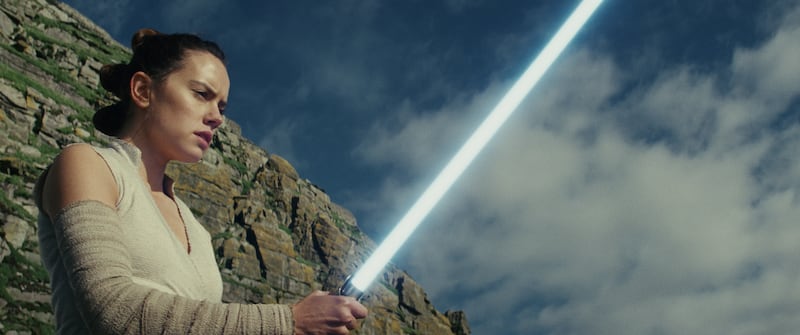Let me bring you back to early 1978 and the release of George Lucas's Star Wars. No, I haven't got that wrong. Hard though it may be to believe, that film hit Irish cinemas more than six months after its US release, in the early summer of 1977. This was one of many things that were about to change in the cineverse.
My friend and I, frequent cinemagoers, trotted along to the screening with busy enthusiasm. Little squirts of information had been emanating from the United States throughout the preceding summer and autumn. A shot of huge queues in the newspaper. A report on the TV news from a puzzled man in an enormous tie. It was months since Meco's disco version of the Star Wars theme had reached number seven in the UK hit parade. We were primed.
"Well that was good. But it was no A Bridge Too Far," my pal said. I still don't entirely disagree. One point here is that, even then, a huge build-up preceded the film's release. It was less carefully orchestrated and involved infinitely scantier media outlets, but the overseas fans got a preview of the elongated campaigns that would precede the release of Star Wars films in the coming century.
The second point is that not everybody – not even every person in the target age group – accepted that Star Wars ushered a welcome revolution in film-making. Some of us who'd watched reruns of Flash Gordon were a little puzzled about why so much effort had gone into remaking that creaky old series. Star Wars had flash and panache. But it wasn't like a proper film. It may have starred Alec Guinness, but it wasn't The Bridge on the River Kwai. It certainly wasn't A Bridge Too Far.
Ultimate movie franchise
So what did I get wrong? Why has Star Wars become the movie franchise that all the other movie franchises long to be? Total takings over the nine films amount to $7.5 billion, or about €6.3 billion. The last episode in the official series, Star Wars: The Force Awakens, became the third-highest-grossing film ever worldwide (and the highest grossing ever in the United States).
Next week Star Wars: The Last Jedi opens in cinemas throughout the world. You need only check the surrounding wasteland that makes up the month's release schedule to confirm what an event Star Wars is. There's a cartoon here. There's a Jumanji spin-off there. But the other studios are not queuing up to join battle with The Last Jedi.

Looking back on my life with Star Wars, I am bound to come up with different answers for different eras. I was at school when the first and second films came out. I was at university when Return of the Jedi emerged. Years of wandering intervened before, back in Dublin as a thirtysomething, I joined those puzzling at The Phantom Menace, in 1999. I reviewed at least one of the subsequent films in the prequel trilogy for The Irish Tmes.
The original Star Wars empire now seems like a cottage industry. Every available penny from every willing customer is being targeted
Now, younger than George Lucas but older than the target audience, I find myself surrounded by bits of Star Wars in every direction. The Walt Disney Company, which owns Lucasfilm, Lucas's old production company, is making sure we get at least one film a year. Just a few months after The Last Jedi opens, Star Wars fans will get to gawp at Solo: A Star Wars Story. The corporate overlords have proved as ruthless as the emperor in their dealings with underlings. The original directors of that project, a Han Solo origin spin-off, were fired late into production and replaced by the old hand Ron Howard. Colin Trevorrow, who made a fortune with Jurassic World, was edged aside to allow JJ Abrams back to direct the final film in the current trilogy. Control is absolute.
It could be argued that Lucas's decision to retain merchandising rights was a business move to compare with Bill Gates's insistence that IBM allow him to flog MS-Dos to other manufacturers. Yet the original Star Wars empire now seems like a cottage industry. Every available penny from every willing customer is being targeted. Lego's fortunes also rest on Star Wars. We now learn that Disney, eager to provide content for its imminent streaming service, is to commission a Star Wars TV series. Another trilogy will follow the current one.
We know what Star Wars is now about. It's about filling every digital hole with an intergalactic peg. No fictional universe has ever expanded to such width.

End of an era
The original film is, along with Steven Spielberg's Jaws, blamed for ending the period of postclassical cinema that made the first two-thirds of the 1970s so interesting. Films such as Chinatown, The Godfather and Taxi Driver were very well reviewed and they made a great deal of money. But they weren't so easy to categorise as the average pop-genre product.
The Godfather looked like a gangster film, but, its own sequel noted, Hollywood managed no lengthy return to that venerable genre. You weren't going to sell many Taxi Driver Lego sets. When Lucas showed a rough cut of Star Wars, special effects still absent, to Brian De Palma and Spielberg, the former director described it as gibberish, but Spielberg knew that it would make $100 million. This was product ("content" in the contemporary parlance) that the studios could understand.
The US yearned for something to make it feel young again. George Lucas and Steven Spielberg helped invent the 1980s several years early
To be fair, the film also chimed with a yearning spirit in the US. It arrived in a bicentennial year that, so soon after Watergate, couldn’t quite shake off attendant anxieties. The gloomy films that had won over critics were all very well, but the US yearned for something to make it feel young again. Lucas and Spielberg helped invent the 1980s several years early. An atmosphere of uncomplicated striving swept across cinemas years before President Reagan bullied the economy into booms and busts.
Hero with a Thousand Faces
It also helped that Lucas kept his stories so close to classic archetypes. Suddenly Joseph Campbell's The Hero with a Thousand Faces, a work in comparative mythology popular in US campuses, became as much a book of the time as any by Carlos Castaneda or Erich von Däniken. "A hero ventures forth from the world of common day into a region of supernatural wonder: fabulous forces are there encountered and a decisive victory is won," Campbell wrote. He could be Telemachus, Luke Skywalker or SpongeBob SquarePants.
Too often the villains in such stories become intoxicated with their own mythologies. Released in the last days of the Clinton administration and the early years of George W Bush’s reign, the notorious prequel trilogy showed the dangers of listening too closely to fans on the internet. The pictures were stuffed with political and spiritual backstory that, although useful for appendices, rarely amounted to anything like a story.

There are reasons to scowl at the current series. Nobody will find any great innovation there. But Abrams and his associates have remembered key lessons from Lucas's first run at the stories. The Force Awakens looks a little like a walk-through of Star Wars, but that's partly because it sticks so closely to the lessons of Joseph Campbell.
The hero is now Daisy Ridley's Rey. She rises from nothing to conquer powerful enemies in dangerous realms. There is a reason that story continues to survive. It fits all ambitions in the face of all opposition. Many of us feel that Darth Vader now sits in the Death Star on Pennsylvania Avenue. Of course, Donald Trump believes that he's Luke Skywalker. Star Wars works for everyone.
Still, it's no A Bridge Too Far.
- Star Wars: The Last Jedi is released on Thursday, December 14th



















